Changes in Mix of Generation Technologies
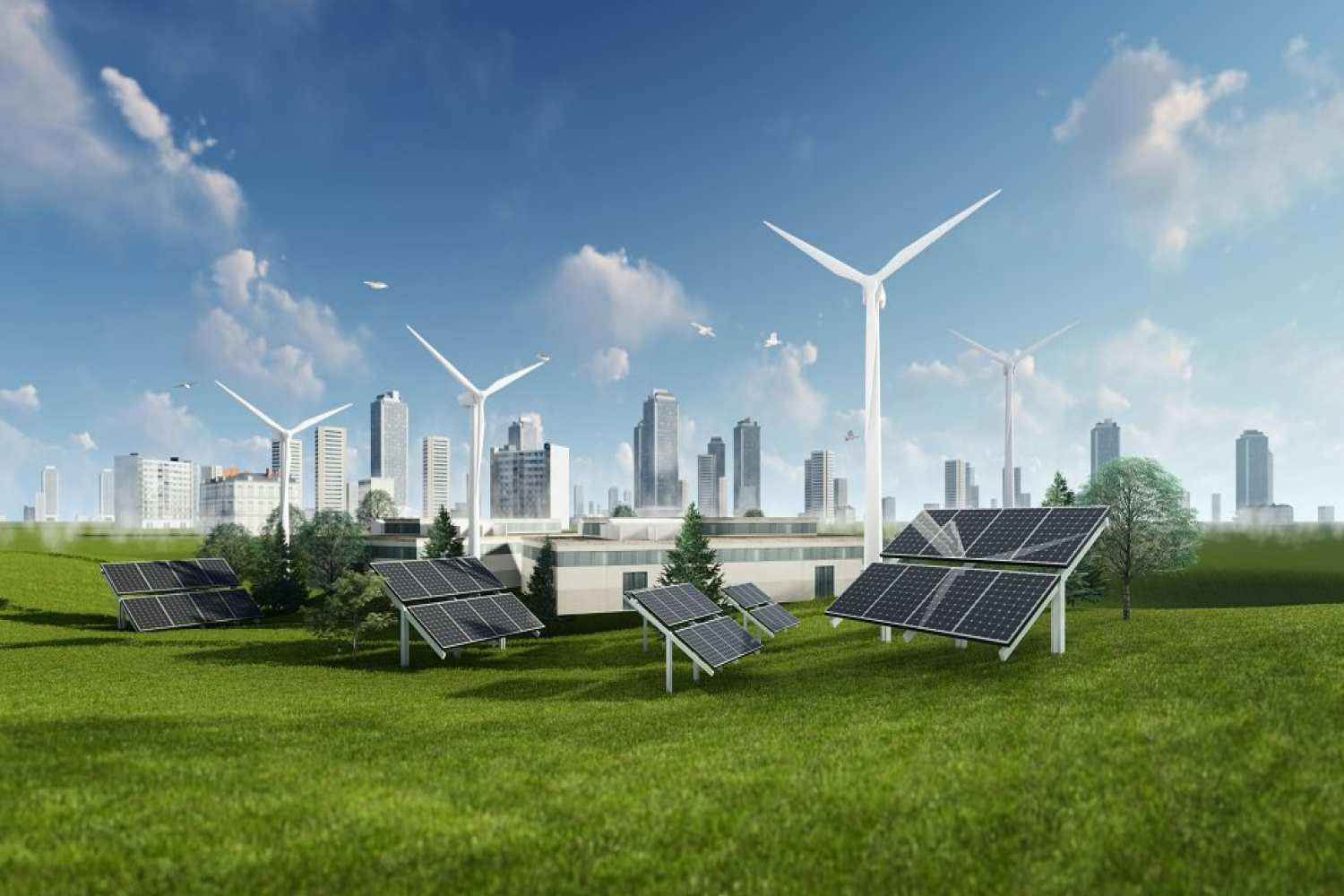
There is strong influence of environmental groups to decrease the fraction of nuclear power and increase the fraction of "Renewable Energy" which the groups in question usually mean wind + solar power. The changes implemented often do not reduce the emissions of carbon dioxide.
Evolution of nuclear power fraction
Nuclear power generation is the technology best suited to reduce CO2 emissions in electricity generation. It grew from the late 1970s to the mid 2000s but then started to fall because of concerns after the accidents at Chernobyl and Fukushima. Since about 2005 the amount of electricity generation has been falling, particularly in Europe.
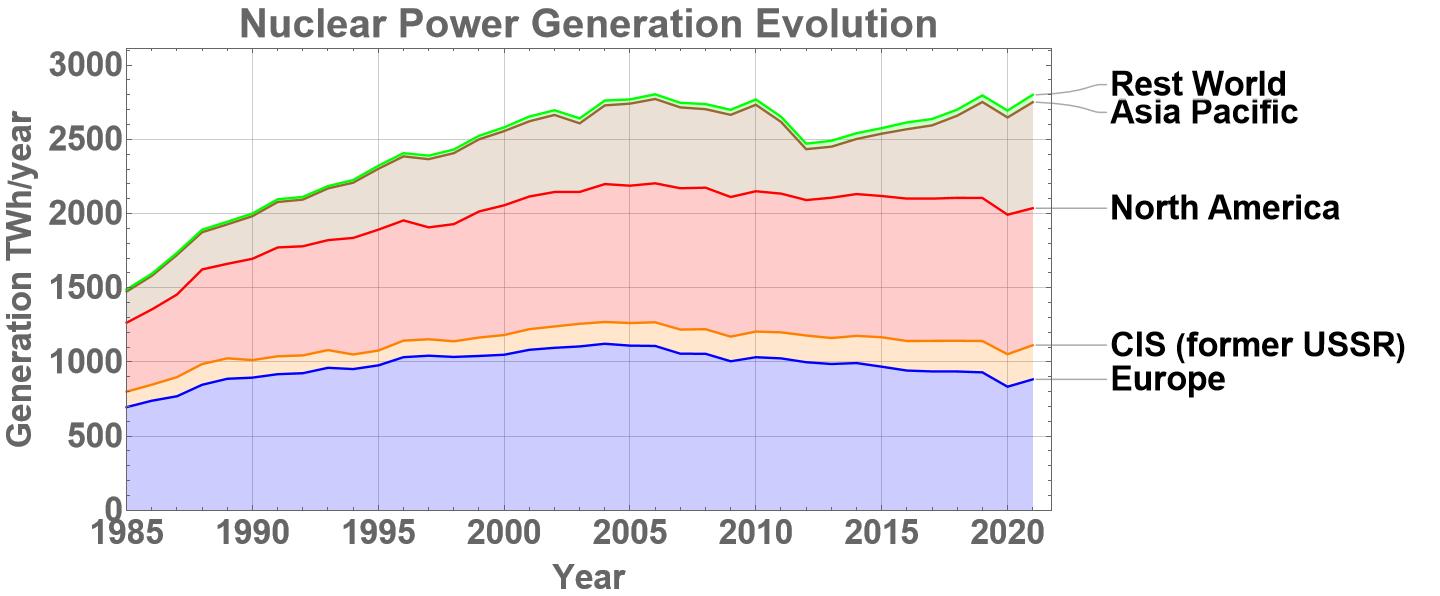
Evolution of nuclear generation in World regions between 1985 and 2021. (Data from BP Statistical Review)
France is the country in the world with the largest fraction of nuclear power in the generation mix. This fraction was about 75% around 2005 but then stated to decrease. At around this time a small fraction of wind and solar power was introduced which grew to about 10% in 2021.
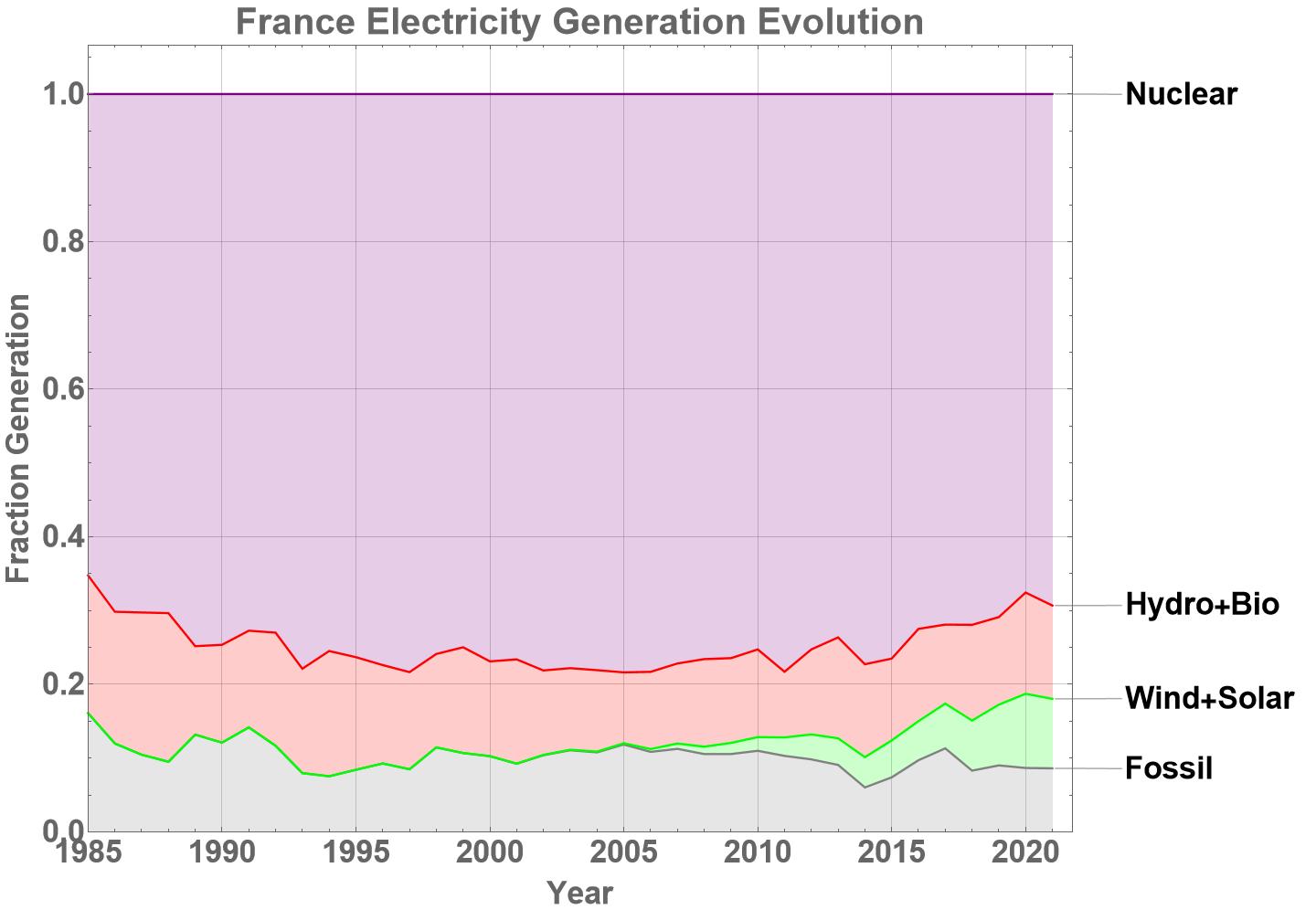
Evolution of electricity mix in France between 1985 and 2021
In Germany, the nuclear fraction was about 30% in 2000 decreasing to 12% in 2021. Production with wind and solar started about 1995 and grew to around 40% in 2021. The fraction of fossil fuel generation decreased from 70% in 1985 to 47% in 2021.
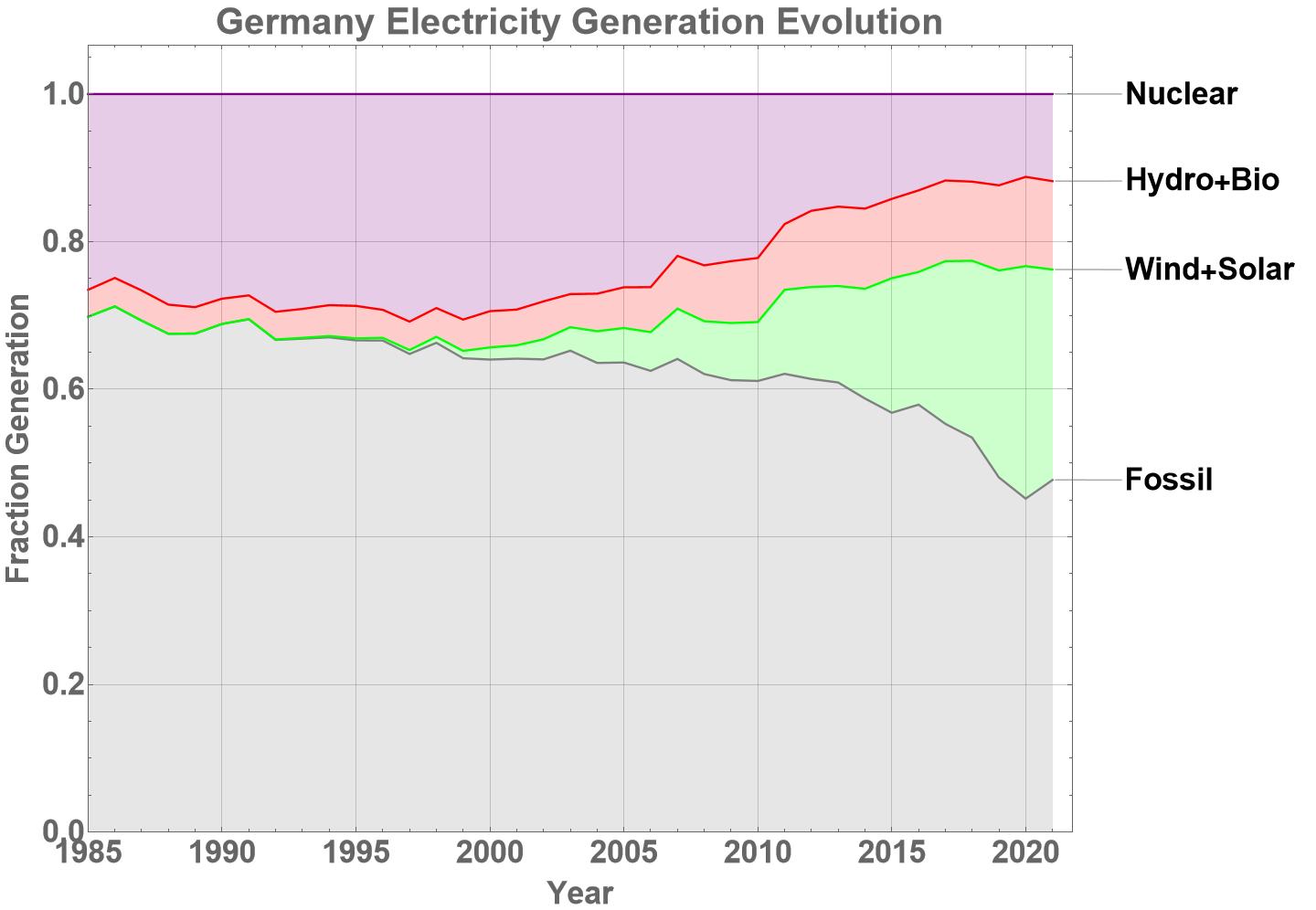
Evolution of Electricity mix in Germany between 1985 and 2021.
The animation and figure below show how the intensity of carbon emission evolved between 1985 and 2021. The clear conclusion is that countries with large fractions of nuclear power (purple) and hydro (red) power have low carbon emissions. Countries with large fractions of wind+solar (green) evolve to a medium level of carbon emissions.
Evolution of carbon emissions
The plots below give the Carbon Intensity of emission from electricity generation in various countries show their evolution from 1985 to 2021. The data is taken from BP Statistical Review of World Energy.
Animation of annual Carbon Intensity in electricity generation in selected countries
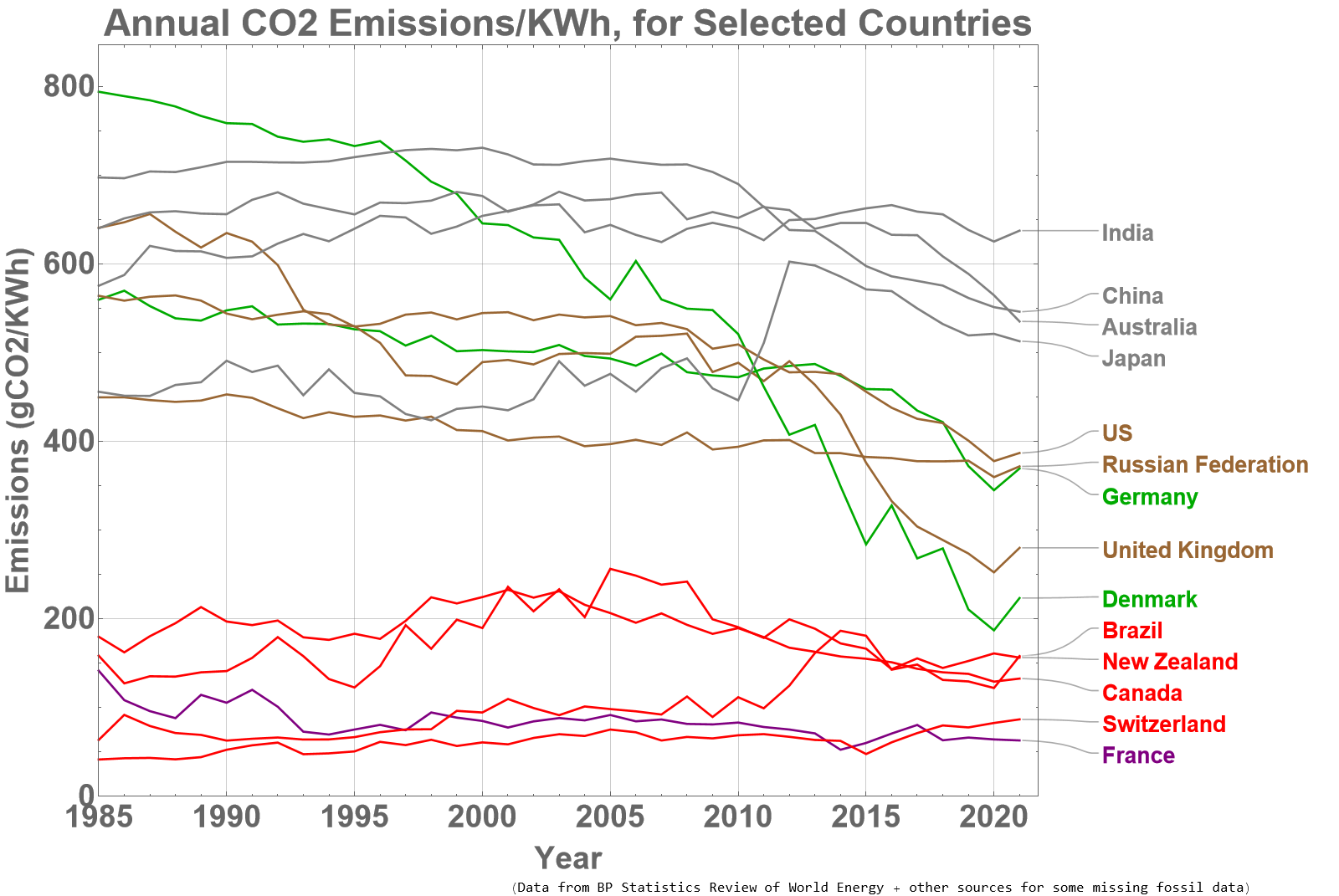
Evolution of carbon emissions from 1985 to 2021. The colours show the dominance of nuclear (purple), hydro (red); wind+solar (green) and fossil (grey).
